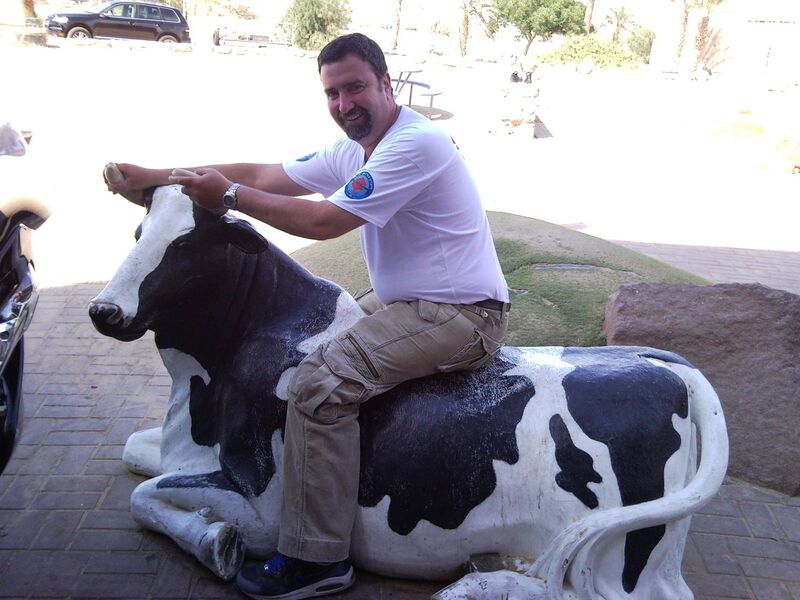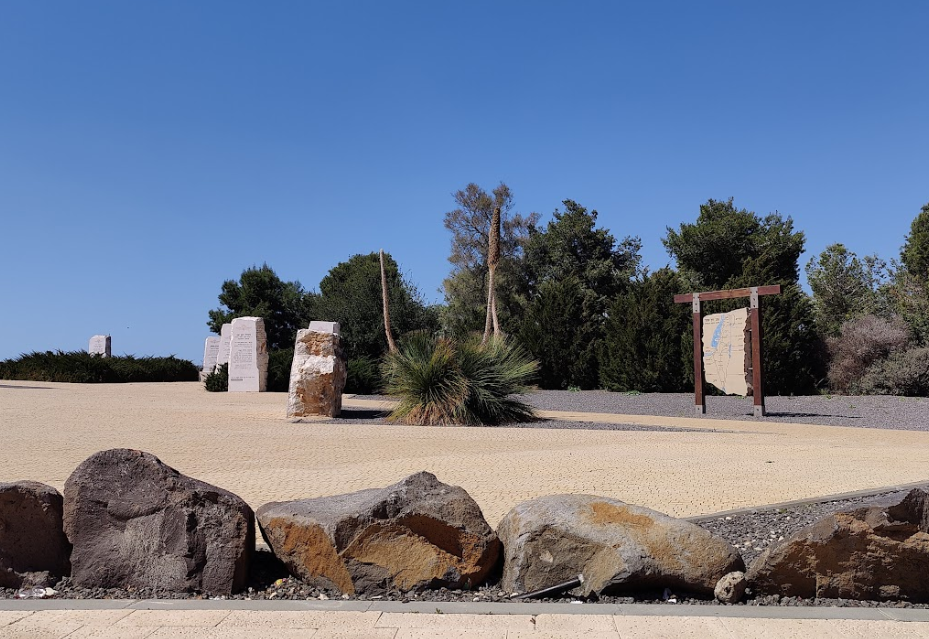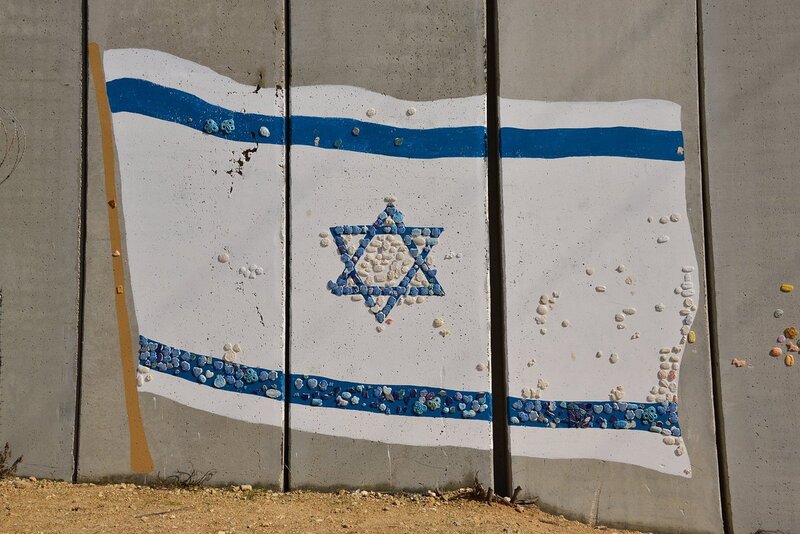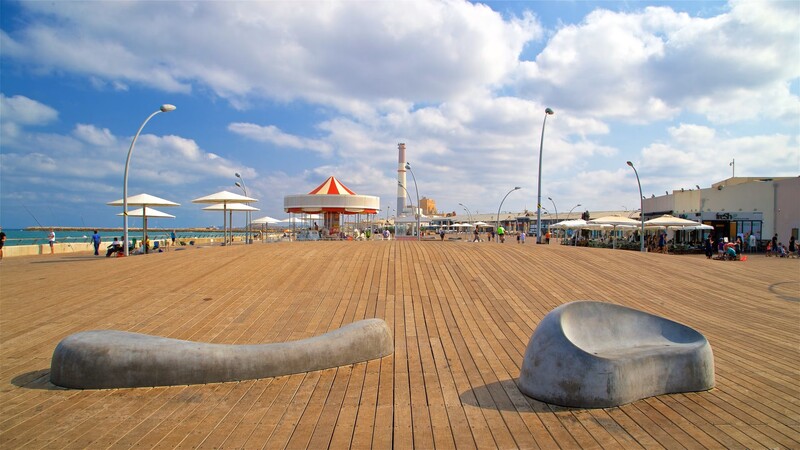Thus, this is our last itinerary article - and I will write one more article after this one talking about logistics details.
If you didn't take your time while you were in Eilat to visit Timna Park, this is your last chance. But consider that you still have around 350 Km to do to Tel Aviv, with some stops on your way. So, it is important to consider at least one to 1.5 hours in Timna when calculating the time to leave Eilat.
Regarding Yotvata: Yotvata is a kibbutz in the South of Israel, very well known by its milk industry. It is a good place to stop and have breakfast, in case you don't have an hotel breakfast available. They have a large stop at the roadside with a restaurant.
After we left Yotvata, our next objective is to get to the region of Sde Boker.
Sde Boker is a kibbutz in the Negev Desert. It is known for being the retirement settlement chosen by David Ben Gurion, the founder and first prime minister of Israel. After renouncing politics, he went to Sde Boker where he still spent many years working at the kibbutz, writing and consulting to his political party. Ben Gurion always believed that the future of Israel was intrinsically connected to populating the Negev Desert, and as such he decided to be by himself an example and move to live there.
We will have two stops at Sde Boker: the first one is at Midreshet Sde Boker, where the tombs of Ben Gurion and his wife are situated, and at the Kibbutz, which has turned Ben Gurion's hut into a museum documenting his time at the Kibbutz.
Our next stop will be a memorial site called "Black Arrow".
The Black Arrow Memorial is a memorial site that remembers the battle heritage of the Paratroop Brigade that fought in reprisal operations in response to enemy infiltrations into Israel in the years leading up to the Sinai Campaign of 1956.
At the place you will find tracks for hiking, monument stones, and an impressive view of the North of Gaza, which makes truly clear why it is so easy for Hammas to launch rockets into Israel and why Israel cannot accept that.
Not far from the Black Arrow memorial you will find another Kibbutz of historical importance: Yad Mordechai.
Kibbutz Yad Mordechai holds significant historical importance in the establishment and defense of the State of Israel. Located in southern Israel, near the border with the Gaza Strip, Yad Mordechai played a vital role during the Israeli War of Independence in 1948.
The kibbutz was founded in 1943 and named after Mordechai Anielewicz, one of the leaders of the Warsaw Ghetto Uprising against the Nazis during World War II.
During the War of Independence, which began in 1947, Yad Mordechai became a critical defensive position for Israel. In May 1948, as the conflict escalated, the Israel Defense Forces (IDF) faced an Egyptian army advancing northwards. The Egyptians sought to capture Tel Aviv and cut off Jewish settlements from the rest of Israel.
Despite being heavily outnumbered and outgunned, the defenders of Yad Mordechai, consisting of kibbutz members, Haganah fighters, and Palmach (elite Jewish fighting force) units, fought valiantly to defend their position. Led by their commander, Colonel David "Dado" Elazar, they repelled the Egyptian forces for six days, employing a combination of trench warfare, booby traps, and ambushes, delaying the Egyptian advance towards Tel Aviv and buying crucial time for the nascent Israeli army to regroup and reinforce their defenses. Ultimately, this allowed the IDF to turn the tide of the war and secure victory.
Yad Mordechai's resistance during the War of Independence has become emblematic of the bravery and resilience of the Israeli people during a challenging period in their history. The kibbutz has since become a symbol of heroism and national pride.
Today, Yad Mordechai serves as a memorial and living museum, commemorating the sacrifices made by its defenders and providing visitors with insight into the historical events that took place. It also continues to function as an agricultural community, cultivating crops and operating a honey production facility.
The kibbutz also maintains a museum of the Guetto uprising and its leader Mordechai Anielewicz.
It is recommended to visit the museum and the reproduction of the Yad Mordechai battlefield.
Six minutes from Yad Mordechai, at the borderline with Gaza, is Netiv HaAsara.
Netiv Haasara is a community near the border with the Gaza Strip. It is a small agricultural moshav in the Western Negev region. The name "Netiv Haasara" translates to "Path of the Ten" in Hebrew, referring to the ten Israeli soldiers who were killed during the War of Attrition in the late 1960s.
Due to its proximity to the Gaza Strip, the village has faced security challenges and has been affected by conflicts between Israel and various militant groups in Gaza. The village has been a frequent target of rocket attacks and other forms of violence. In response to these threats, security measures such as fortified structures, a protection wall separating it from Gaza and warning systems have been implemented to protect the residents.
Many of its residents are engaged in farming activities, including the cultivation of citrus fruits, vegetables, and flowers. The village also has a dairy farm. In recent years, efforts have been made to develop the local tourism industry, offering visitors a glimpse into the agricultural lifestyle of the region.
One of the tourism attractions developed was having the moshav's children painting the separation wall and transforming it into what is called "The path for Peace".
A visit to the place is fast and is a glimpse of the security problems that these border villages have to deal with, and the interesting and human ways that they find to have children growing up there in a healthy way.
Our next stop is already our final destination.
On our way to Tel Aviv we will pass by Ashkelon, known for its beautiful beaches, and Ashdod, known for nice restaurants and cafes near the beach. You can decide if you want to stop in any of them.
From Ashkelon to the North, the riding will be already through main roads.
Jaffa (Yafo) - the old city of Jaffa was a fishermen village when Tel Aviv was created. With the years, Tel Aviv has grown very much and was unified with Jaffa as a single city. Jaffa has a simple port with fish restaurants, and an old town that is stunning. While the original population has been moving from Old Jaffa to the new area of the city, houses there have been sold to artists who are making them their residence and ateliers. The old city is a great walk, all "streets" are named after the signs of the zodiac, and walking there is like returning 200 years in time. The view of Tel Aviv from the old city is also beautiful.
In my next (and last) article of this series, I will try to describelogistics subjects that will probably help you, like:
- Arriving in Israel with your own motorcycle
- Renting a motorcycle in Israel
- Weather in Israel
- etc...































 RSS Feed
RSS Feed
